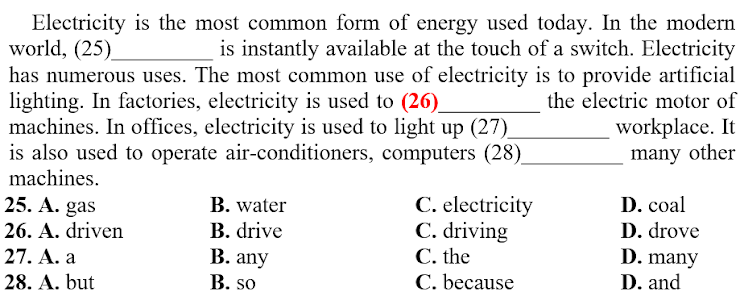Read the following passage and mark the letter A,B,C, or D on your answer sheet to indicate the correct word or phrase that best fits each of the numbered blanks.
THE HOSTORY OF WRITING
The development of writing (30)________ a huge difference to the world and might see it as the beginning of the media. Pieces of pottery with marks on that are probably numbers have been discovered in China (31)________date from around 4000 BC. Hieroglyphics and other forms of “picture writing” developed in the area around Mesopotamia (modern-day Iraq), where the ancient Sumerian civilization was based, from around 3300 BC onwards. However, the first (32)________ alphabet was used by the Phoenicians around 1050 BC. Their alphabet had 22 letters and it is estimated that it lasted for 1000 years. The first two signs were called “aleph” and “beth”, which in Greek became “alpha” and “beta”, which gave us the modern word “alphabet”.
The modern European alphabet is based on the Greek and spead (33)________other European countries under the Romans. A number of changes took place as time passed. The Romans added the letter G, and the letter J and V were unknown to people in Shakespeare’s time.
If we (34)________the history of punctuation, we also find some interesting facts. The Romans used to write quaesto at the end of a sentence in order to show that it was a Question. They started to write Qo in place of the whole word, and the put the Q above the o. In the end, that became the question mark “?”
Điền vào ô 31
A. where
B. that
C. who
D. when


Đáp án B.
Tạm dịch: Pieces of pottery with marks on that are probably numbers have been discovered in China________date from around 4000 BC: Các mảnh gốm với các dấu hiệu trên đó, có thể là các con số, được phát hiện ở Trung Quốc, có niên đại từ khoảng năm 4000 trước Công nguyên.
Chỗ trống thiếu đại từ quan hệ làm chủ ngữ, làm rõ nghĩa cho pieces of pottery nên đáp án đúng là B. that.